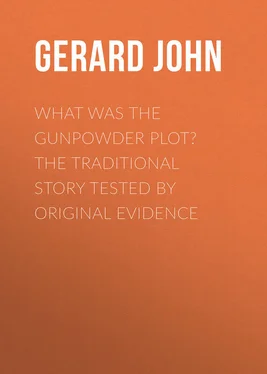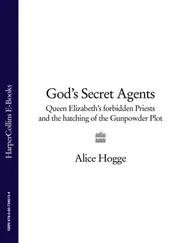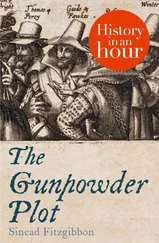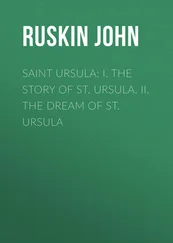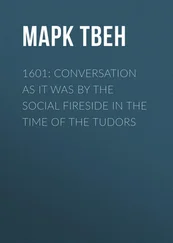John Gerard - What was the Gunpowder Plot? The Traditional Story Tested by Original Evidence
Здесь есть возможность читать онлайн «John Gerard - What was the Gunpowder Plot? The Traditional Story Tested by Original Evidence» — ознакомительный отрывок электронной книги совершенно бесплатно, а после прочтения отрывка купить полную версию. В некоторых случаях можно слушать аудио, скачать через торрент в формате fb2 и присутствует краткое содержание. Жанр: foreign_antique, foreign_prose, на английском языке. Описание произведения, (предисловие) а так же отзывы посетителей доступны на портале библиотеки ЛибКат.
- Название:What was the Gunpowder Plot? The Traditional Story Tested by Original Evidence
- Автор:
- Жанр:
- Год:неизвестен
- ISBN:нет данных
- Рейтинг книги:5 / 5. Голосов: 1
-
Избранное:Добавить в избранное
- Отзывы:
-
Ваша оценка:
- 100
- 1
- 2
- 3
- 4
- 5
What was the Gunpowder Plot? The Traditional Story Tested by Original Evidence: краткое содержание, описание и аннотация
Предлагаем к чтению аннотацию, описание, краткое содержание или предисловие (зависит от того, что написал сам автор книги «What was the Gunpowder Plot? The Traditional Story Tested by Original Evidence»). Если вы не нашли необходимую информацию о книге — напишите в комментариях, мы постараемся отыскать её.
What was the Gunpowder Plot? The Traditional Story Tested by Original Evidence — читать онлайн ознакомительный отрывок
Ниже представлен текст книги, разбитый по страницам. Система сохранения места последней прочитанной страницы, позволяет с удобством читать онлайн бесплатно книгу «What was the Gunpowder Plot? The Traditional Story Tested by Original Evidence», без необходимости каждый раз заново искать на чём Вы остановились. Поставьте закладку, и сможете в любой момент перейти на страницу, на которой закончили чтение.
Интервал:
Закладка:
104
Traditional Memoirs , 36. Of this writer Lord Castlemaine says, "He was born before this plot, and was also an inquisitive man, a frequenter of company, of a noted wit, of an excellent family, and as Protestant a one as any in the whole nation."
105
Court of King James (1839), i. 102.
106
Stonyhurst MSS., Anglia , v. 67.
107
E.g. , in the Advocate of Conscience Liberty (1673), p. 225.
108
History of Mary Queen of Scots and James I. , p. 334. Bishop Kennet, in his Fifth of November Sermon, 1715, boldly declares that Sanderson speaks not of Cecil the statesman, but of Cecil "a busy Romish priest" (and, he might have added, a paid government spy). The assertion is utterly and obviously false.
109
Memoirs , p. 22.
110
History of England, Royal House of Stuart , p. 27.
111
General History of England , iii. 757.
112
History of His Own Times , i. 11.
113
Church History , Book X. § 39.
114
Antipathie of the English Lordly Prelacie, to the regall Monarchie and Civill Unity , p. 151.
115
A Short View of the English History , p. 296.
116
Note to Fuller's Church History , x. § 39, and to the Student's Hume .
117
Illustrations , iii. 172.
118
Parker and Co. This author says of Cecil and his rival Raleigh, "Both were unprincipled men, but Cecil was probably the worst. He is suspected not only of having contrived the strange plot in which Raleigh was involved, but of being privy to the proceedings of Catesby and his associates, though he suffered them to remain unmolested, in order to secure the forfeiture of their estates" (p. 338).
119
Criminal Trials , ii. 68.
120
History of England , i. 254, note.
121
Catholique Apology , p. 412.
122
Hist. Prov. Angl. S.J. , p. 310.
123
Condition of Catholics under James I. , p. 100.
124
R.O. Dom. James I. , lxxxi. 70, August 29th, 1615.
125
A Plain and Rational Account of the Catholick Faith , Rouen, 1721, p. 197.
126
Certamen utriusque Ecclesiæ , James I.
127
The author of the English Protestants' Plea (1621) says: "Old stratagems and tragedies of Queene Elizabeth's time must needs be renewed and playde againe, to bring not only the Catholikes of England, but their holy religion into obloquy" (p. 56).
Peter Talbot, Bishop of Dublin, in the Polititian's Catechisme (1658) writes: "That Cecil was the contriver, or at least the fomenter of [the Plot,] was testified by one of his own domestick Gentlemen, who advertised a certain Catholike, by name Master Buck, two months before, of a wicked designe his Master had against Catholikes" (p. 94).
128
A writer, signing himself "Architect," in an article describing the old palace of Westminster ( Gentleman's Magazine , July, 1800, p. 627), having occasion to mention the Gunpowder Plot, observes: "This Plot is now pretty well understood not to have been hatched by the Papists, but by an inveterate foe of the Catholicks of that day, the famous minister of James… All well-informed persons at present laugh at the whole of this business."
129
The name "old House of Lords" is somewhat ambiguous, being variously applicable to three different buildings:
(i.) That here described, which continued to be used till the Irish Union, a. d. 1800.
(ii.) The "Court of Requests," or "White Hall," used from 1800 till the fire of 1834.
(iii.) The "Painted Chamber," which, having been repaired after the said fire, became the place of assembly for the Lords, as did the Court of Requests for the Commons.
The original House of Lords was demolished in 1823 by Sir John Soane, who on its site erected his Royal Gallery. (See Brayley and Britton, History of the Palace of Westminster .)
130
The authority for this is the Earl of Northampton, who at Father Garnet's trial mentioned that it was so stated in ancient records. Remains of a buttery hatch in the south wall confirmed his assertion.
The foundations of the building were believed to date from the time of Edward the Confessor, and the style of architecture of the superstructure assigned it to the early part of the thirteenth century, as likewise the "Prince's Chamber."
131
Brayley and Britton, History of the Palace of Westminster , p. 421; J. T. Smith, Antiquities of Westminster , p. 39 (where illustrations will be found); Gentleman's Magazine , July, 1800, p. 626.
132
It was here that the death warrant of Charles I. was signed.
133
An old print (which states that it is taken from "a painted print in the Cottonian library,") representing the two Houses assembled in presence of Queen Elizabeth, has windows on both sides. The same plate, with the figure of the sovereign alone changed, was made to do duty likewise for a Parliament of James I. By Hollar's time (1640-77) the windows had been blocked up and the tapestry hung.
134
Cecil wrote to Cornwallis, Edmondes, and others, November 9th, 1605, "This Piercey had a bout a year and a half a goe hyred a parte of Vyniards house in the old Palace," which appears to be Mr. Hepworth Dixon's sole authority for styling the tenement "Vinegar House."
135
See Appendix E, Site of Percy's house .
136
Evidence of Mrs. Whynniard, November 7th, 1605. Epsley is evidently the same person as Hoppisley, who was examined on the 23rd of the same month.
137
Birch, Historical View , p. 227.
138
Historie , p. 1231.
139
Gunpowder Treason, Harleian Miscellany , iii. 121.
140
At his first examination, November 5th 1605, Faukes declared that he had not been sure the king would come to the Parliament House on that day, and that his purpose was to have blown it up whenever his Majesty was there.
141
The agreement between Percy and Ferrers is in the Record Office ( Gunpowder Plot Book , 1.) and is endorsed by Cecil, "The bargaine … for the bloody sellar." Upon this there will be more to remark later.
142
Jardine, Gunpowder Plot , p. 42.
143
The 11th of December, O.S., was at that period the shortest day, which circumstance suggested to Sir E. Coke, on the trial of the conspirators, one of his characteristic facetiæ; he bade his hearers note "That it was in the entring of the Sun into the Tropick of Capricorn, when they began their Mine; noting that by Mining they should descend, and by Hanging, ascend."
144
Интервал:
Закладка:
Похожие книги на «What was the Gunpowder Plot? The Traditional Story Tested by Original Evidence»
Представляем Вашему вниманию похожие книги на «What was the Gunpowder Plot? The Traditional Story Tested by Original Evidence» списком для выбора. Мы отобрали схожую по названию и смыслу литературу в надежде предоставить читателям больше вариантов отыскать новые, интересные, ещё непрочитанные произведения.
Обсуждение, отзывы о книге «What was the Gunpowder Plot? The Traditional Story Tested by Original Evidence» и просто собственные мнения читателей. Оставьте ваши комментарии, напишите, что Вы думаете о произведении, его смысле или главных героях. Укажите что конкретно понравилось, а что нет, и почему Вы так считаете.
